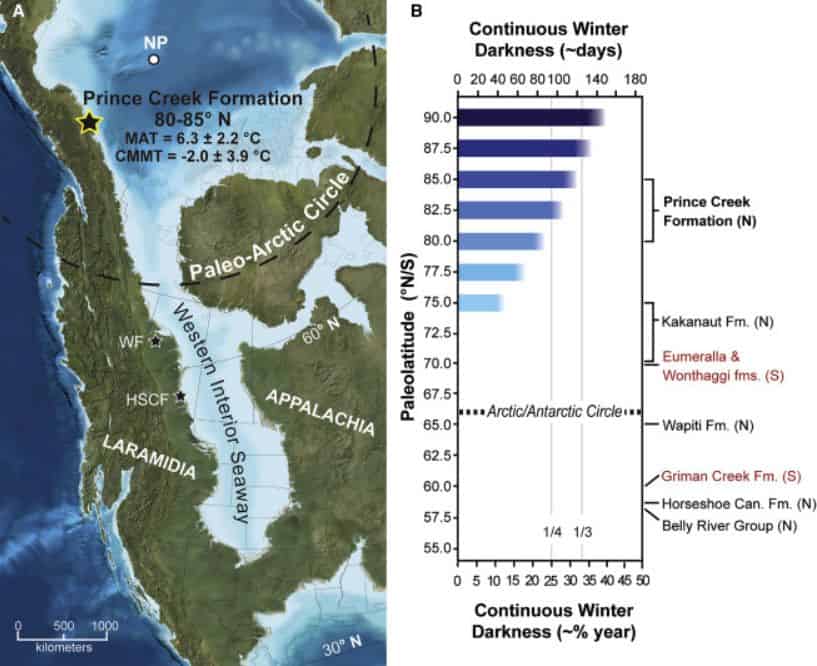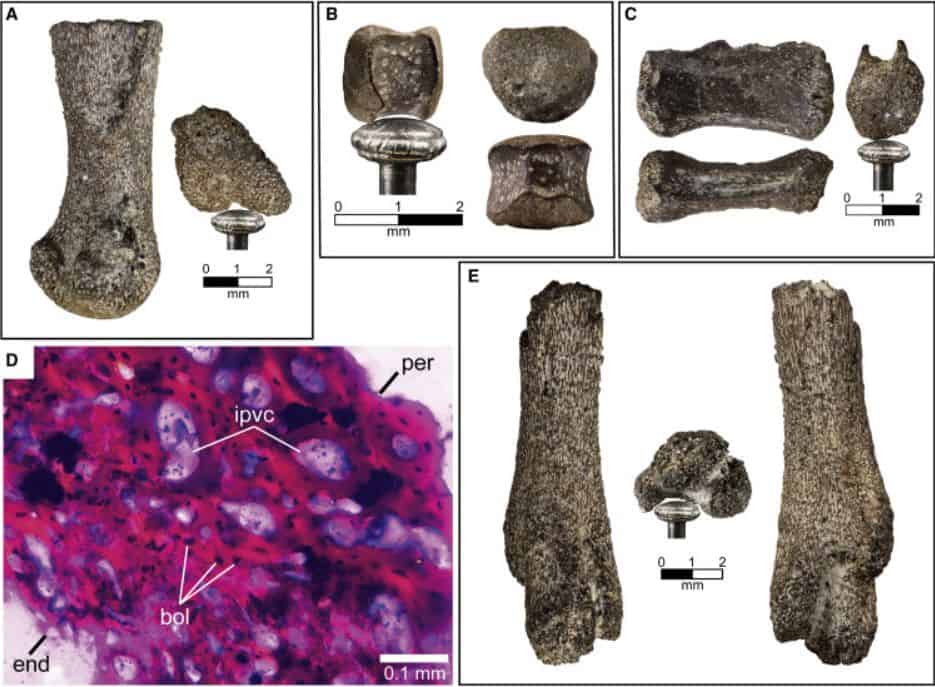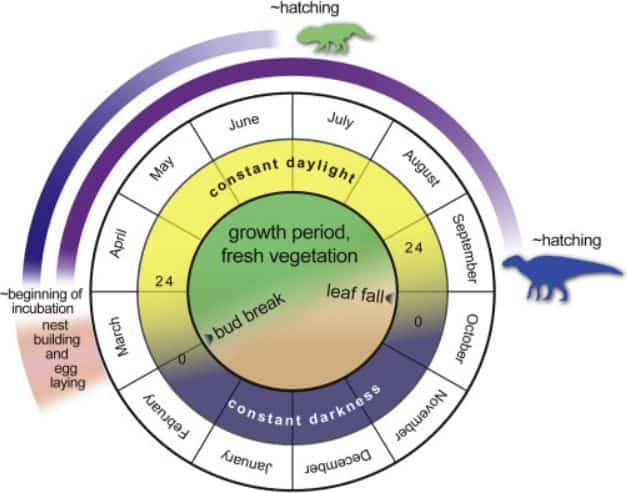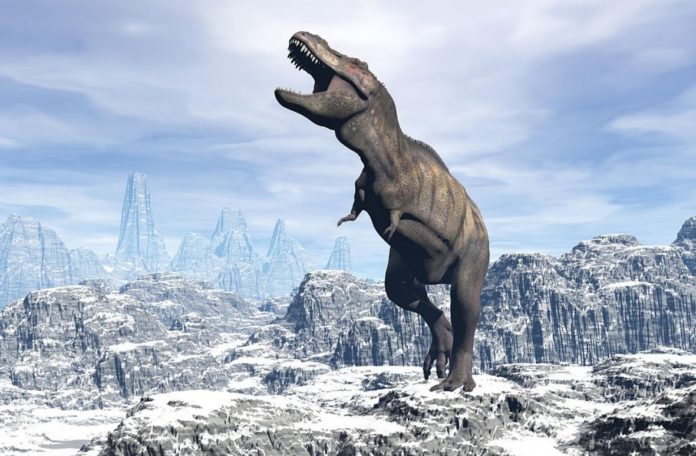Nursery in the far north: despite the cold and polar winter, dinosaurs not only lived in the Arctic all year round, they also hatched their offspring there. This has now been proven by fossil records of tiny teeth and bones from newly hatched baby dinosaurs of various species.
It is the first evidence that dinosaurs reproduce at such high latitudes – and an indication of their warm-bloodedness, as the paleontologists report in the specialist magazine “Current Biology”.
Although there was a greenhouse climate in the Cretaceous period, it was still not very comfortable in the Arctic back then: temperatures fell below freezing in winter and it remained dark for months. Nevertheless, finds of thousands of footprints and fossils in Alaska show that whole herds of herbivorous dinosaurs romped there around 70 million years ago.
So far, however, paleontologists have assumed that these dinosaurs only stayed there in summer and moved south in winter, where they also had their young.
Fossil dinosaur nursery
This assumption is now refuted by new fossil finds from northern Alaska. For their study, Patrick Druckenmiller from the University of Alaska Museum and his team looked for the smallest relics of Cretaceous dinosaurs in the sedimentary rock of a rock formation above the Colville River.
“Some of these fossils are the size of pinheads or dandruff flakes, and the fact that they survived the rigours of fossilisation at all is remarkable,” explains Druckenmiller.
But the effort has paid off: In the deposits, the researchers discovered numerous tiny teeth and pieces of bones that came from newly hatched or even still unhatched baby dinosaurs from around 70 million years ago.
“We found the relics of young animals from almost all of the dinosaur species that occur in this formation – it was the purest maternity ward,” reports Druckenmiller.
From mini dinosaurs to tyrannosaurus
Among the newborn or still in the egg dinosaurs were representatives of small, bird-like species, but also juveniles of the huge tyrannosaurs. In addition to herbivorous duck-billed dinosaurs, massive, horn-bearing ceratopsids or two-legged thescelosaurs, carnivorous species such as tyrannosaurs, troodon animals and dromaeosaurids also evidently had their nursery in the far north.

“It wasn’t long ago that the idea of even finding dinosaurs in these extreme latitudes and environments was astonishing,” says Druckenmiller.
“To see now that almost all of these species also reproduced in the Arctic is really remarkable. We now have clear evidence that these dinosaurs also nested here and were able to reproduce at these high latitudes.”
Winter in the Arctic
The discovery of the Arctic dinosaur nursery casts doubt on the theory that the dinosaurs spent the winter further south. Because biochemical analyzes suggest that these dinosaur species had to hatch their eggs for three to six months, as the paleontologists explain.
“The arctic summers had 24 hours of sunlight and good conditions for a growing dinosaur – if it evolved quickly enough before winter came,” explains co-author Caleb Brown of the Royal Tyrrell Museum in Canada. Because the summers in the Arctic were already short back then.

Even if the dinosaurs had laid their eggs early in the arctic spring, the hatched young would probably not be fit enough to undertake a longer hike in autumn. According to the scientists, it therefore stands to reason that these dinosaur species overwintered in the far north as well.
Were the dinosaurs warm blooded?
But this raises the question of how the dinosaurs managed this: How did they survive the permanent darkness and cold of the arctic winters?
“Perhaps the young and smaller species went into a kind of hibernation,” says Druckenmiller.
“Others could have been adapted to making it through spring even with sparse food, similar to the moose today.”
Nevertheless, a year-round stay in the Arctic would have been an enormous challenge for the physiology of the giant lizards, if only because of the cold.
“Our findings touch on one of the key questions in paleontology: Were the dinosaurs warm-blooded?” Explains Druckenmiller.

Co-author Gregory Erickson from Florida State University adds: “So far we have not found any cold-blooded animals such as amphibians, lizards or crocodiles in the far north – only animals of the same temperature as birds and mammals – and the dinosaurs. I think this is one of the most convincing pieces of evidence that the dinosaurs must indeed have been warm-blooded.”
Source: University of Alaska Fairbanks, Cell Press
Image Credit: Getty
